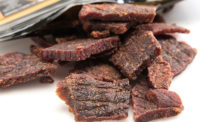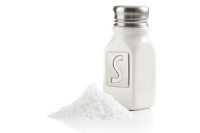Investigating thermal-processing food-safety standards





Thermal treatments are critical in controlling foodborne pathogens in ready-to-eat meat and poultry products. The USDA, FSIS document, “Compliance Guidelines for Meeting Lethality Performance Standards for Certain Meat and Poultry Products” (Appendix A), has been used extensively by the meat industry and universally accepted by regulatory agencies as a safe harbor to provide lethality of harmful, pathogenic bacteria in RTE meat and poultry products.
Although Appendix A is widely used for many different products, it was originally developed and validated only for Salmonella in roast beef. Appendix A was developed from D- and z-value experiments where a D-value is defined as the temperature at which a 90% (1-log) pathogen reduction at a specific temperature has occurred, while a z-value is defined as the change in temperature necessary to increase the D-value by an additional log (factor of 10).
Our laboratory has recently completed a study funded by the American Meat Institute Foundation titled, “Developing validated time-temperature thermal processing guidelines for ready-to-eat deli meat and poultry products” (http://www.amif.org/research/10-304/).
The goals of that study were to (1) measure D- and z- values for Salmonella, L. monocytogenes and shiga-toxin producing E. coli (STEC) in roast beef, turkey deli-breast and boneless ham, (2) validate the measured D-values in commercial products, and (3) generate data to develop validated and simple-to-use thermal processing tools.
Ground turkey breast, roast beef and ham were inoculated with 8 log CFU/g L. monocytogenes or Salmonella or STEC. One-gram portions (0.5-1.0 mm thick) placed in moisture-impermeable vacuum pouches were heated at one of four temperatures (130, 140, 150 or 160°F) in a water bath, and surviving bacterial levels were determined at seven time points. Results were then utilized to develop linear regressions for calculation of D- and z-values.
To validate thermal death times determined by the D- and z-value experiments, commercial roast beef, turkey breast and ham were manufactured, inoculated with selected pathogenic bacteria, and cooked to one of three final internal temperatures (130, 145 or 150°F). Samples were removed from the core, midpoint and surface of product chubs to enumerate surviving pathogens at pre-determined time-temperature targets. Product temperature profiling using temperature recording devices was also conducted to “map” pathogen and temperature relationships throughout the thermal process.
This research was successful in generating D- and z-values for three different products and three different pathogenic bacterial strains. Validation results confirmed that the cooking temperatures and times in Appendix A are sufficient to inactivate pathogens when temperatures meet or exceeded 145°F. However, when cooking roast beef to 130°F, current Appendix A thermal-processing guidance for Salmonella was not supported — suggesting additional cooking time or higher cooking temperatures are needed to achieve a target pathogen reduction.
Author’s note: Results from this research can be utilized to define lethal cooking processes for L. monocytogenes, Salmonella, and STEC in a broader range of RTE meat products. Further, data generated from experiments currently taking place will be included with existing results to further develop easy-to-use process lethality tools to more easily ensure the microbiological safety and regulatory compliance for RTE meat products.
Looking for a reprint of this article?
From high-res PDFs to custom plaques, order your copy today!










